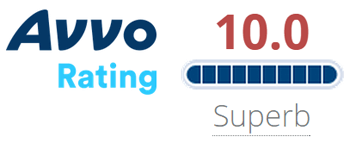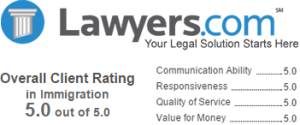The following memo explains how to obtain B-2 visas for domestic partners of persons present in the United States on temporary visas.
R 091817Z JUL 01
FM SECSTATE WASHDC
TO ALL DIPLOMATIC AND CONSULAR POSTS
SPECIAL EMBASSY PROGRAM
UNCLAS STATE 118790
VISAS – INFORM CONSULS
E.O. 12958: N/A
TAGS: CVIS, CMGT
SUBJECT: B-2 CLASSIFICATION FOR COHABITATING PARTNERS
1. SUMMARY. Posts are reminded that B-2 classification is appropriate for cohabitating partners of long term non-immigrants, provided the alien is able to overcome INA 214(b). The FAM is being revised to expressly incorporate this long-standing interpretation. The text of the revised FAM note is contained at the end of this cable. END SUMMARY
Client Reviews

Great Work!
“We are very pleased by the services we get from the Law Offices of Carl Shusterman. Our experience in the past year with all our H1B renewals has been amazing, and we’ve obtained great results.”
- KRG Technologies, Valencia, California
Read More Reviews
Zoom Consultations Available!
2. Posts frequently encounter cases involving long term non-immigrants in various categories (A/G/NATO, F/J/M, E/H/I/L etc.) who have a cohabitating partner who wishes to accompany the “principal” alien to the U.S. As explained in 9 FAM 40.1 N1.2, unless the relationship Is recognized under law as being fully equivalent in all respects to a traditional legal marriage and grants the parties all the same rights and duties as a traditional marriage, the cohabiting partner cannot qualify for derivative status. However, such aliens may be classified as B-2 visitors, provided they are otherwise qualified for B classification. This is true for both opposite and same-sex partners.
——————————————————–
ACCOMPANYING ONE’S PARTNER IS COMPATIBLE WITH B-2 STATUS
——————————————————–
3. The availability of B-2 classification in such cases is apparent from existing FAM guidance at 9 FAM 41.31 N11.4. That Note provides that “dependents of nonimmigrants who are not entitled to derivative status, as in the case of an elderly parent of an E-1 alien . . ., may be issued a B-2 visa.” Although the examples in the FAM note involve relatives, the same logic applies to cohabitating partners.
4. Accompanying one’s “significant other” who is temporarily working or studying in the U.S. would be considered travel for pleasure, within the meaning of INA 101(a)(15)(B). The primary purpose of travel is controlling. Thus, if the primary purpose of the partner or family member is to accompany the principal alien, then the B-2 visa classification is appropriate. Therefore, the activity is consistent with B-2 status, as long as the accompanying partner does not intend to work. (If the latter, the accompanying partner will need a temporary work visa which permits such planned activity.)
—————————————–
EXTENDED STAYS CAN QUALIFY AS “TEMPORARY”
—————————————–
5. The fact that the cohabitating partner may be living in the U.S. for an extended period is not a bar to B-2 classification. Cases of this type are governed by 9 FAM 41.31 N2.4. That Note provides as follows:
“The period of time projected for the [B visa] visit must be consistent with the stated purpose of the trip. The applicant must establish, with reasonable certainty, that departure from the United States will take place upon completion of the temporary visit. Although temporary’ is not specifically defined by either statute or regulation, it generally signifies a limited period of stay. The fact that the period of stay in a given case may exceed six months or a year is not in itself controlling, provided the consular officer is satisfied that the intended stay actually has a time limitation and is not indefinite in nature.”
6. Thus, in evaluating these cases, posts should not focus on the absolute length of the stay; rather, posts should focus on whether the stay has some finite limit. For example, the temporariness requirement would be met in a case where the cohabitating partner will accompany, and depart with, the “principal” alien on a two-year work assignment or a four-year degree program.
——————————————-
THE ACCOMPANYING PARTNER MUST STILL SATISFY
THE RESIDENCE ABROAD REQUIREMENT
——————————————-
7. As in any B visa case, the accompanying partner must still establish that he/she has a residence abroad that the alien does not intend to abandon. In determining whether the individual can meet this burden, posts should not focus on the duration of stay per se but rather should examine the B-2 applicant’s ties abroad and the likelihood that he/she would stay in the U.S. illegally after the “principal” alien departs.
8. In making this assessment, it is appropriate to consider the applicant’s current circumstances and their prospects in their home country upon return, as well as the strength of their relationship with the “principal” alien and the “principal” alien’s own ties abroad. For example, an applicant who is part of a couple who have lived together for many years and who are both well-established with strong ties to their home country would normally be able to overcome 214(b). Conversely, a “partner” (boy/girlfriend) who only recently entered into a relationship with the principal and who has weak ties of his/her own may have greater difficulty demonstrating a residence abroad.
9. Posts should note that “principal” aliens in some visa categories (i.e., H-1 and L) may be statutorily exempted from INA 214(b), or may not be subject to the residence abroad requirement (e.g., A/G, E, I, O, R). Their accompanying B-2 partners, however, are not exempt from the residence abroad requirement or from INA 214(b).
———————————-
EXTENSIONS OF STAY MAY BE REQUIRED
———————————-
10. Although accompanying partners may be issued B-2 visas to undertake stays of an extended duration, their initial period of admission may not be sufficient to accommodate their planned stay. INS regulations allow a maximum initial admission in B status of only one year, and most often INS grants B visitors an initial admission of six months. However, the initial period of admission is extendable in six months increments, and there is no absolute limit on the maximum length of stay available in B-2 status. Posts should use visa annotations to indicate the purpose and length of stay in such cases, as that will increase the likelihood that the inspector grants the maximum possible admission period on initial entry and will facilitate subsequent extensions.
11. In cases involving extended stays, posts should take care to warn accompanying partners of the need to apply for extensions of stay. Posts should also explain the limits of B-2 status and the types of activities that are not permissible in B-2 status.
————————————
REVISED FAM NOTE – 9 FAM 41.31 N11.4
————————————
12. 9 FAM 41.31 N11.4 is being amended to expressly refer to cohabitating partners (and other household members who may not qualify for derivative status). The following is the revised text of the Note:
N11.4 Cohabitating Partners, Extended Family Members, and Other Household Members Not Eligible for Derivative Status
B-2 classification is appropriate for aliens who are members of the household of another alien in longterm nonimmigrant status but who are not eligible for derivative status under that alien’s visa classification. Such aliens may include cohabitating partners or elderly parents of temporary workers, students, diplomats posted to the U.S., etc. B-2 classification may also be accorded to a spouse or child who qualifies for derivative status (other than derivative A or G status) but for whom it may be inconvenient or impossible to apply for the proper H-4, L-2, F-2 or other derivative visa. If such individuals plan to stay in the U.S. for more than six months, they should be advised to ask INS for a one-year stay at the time they apply for admission. If needed, they may thereafter apply for extensions of stay, in increments of up to six months, for the duration of the principal alien’s nonimmigrant status in the U.S.
13. This cable was cleared with INS HQ.
POWELL








